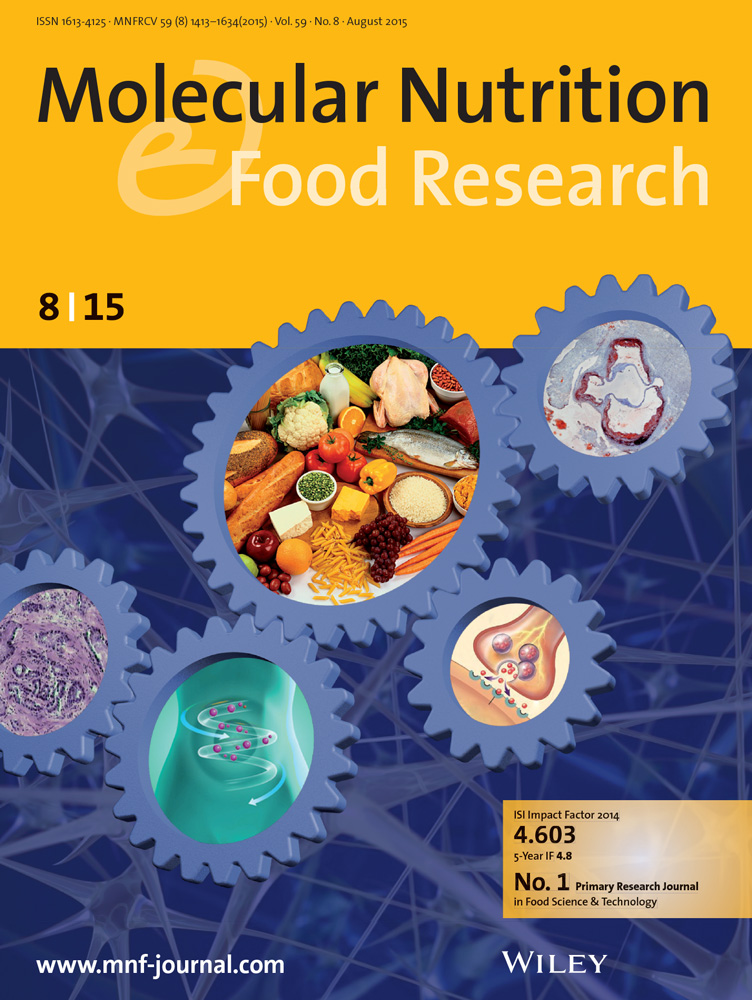Effect of the Food Matrix on the Survival to the Gastrointestinal Transit of Lacticaseibacillus rhamnosus CRL1505: A Randomized, Controlled, Crossover Study.
IF 4.2
2区 农林科学
Q1 FOOD SCIENCE & TECHNOLOGY
引用次数: 0
Abstract
Probiotic survival is crucial for their beneficial effect, but only a few studies have assessed the impact of delivery format on probiotic viability after passage through the gastrointestinal tract.Our study aimed to investigate the survival of Lacticaseibacillus rhamnosus (L. rhamnosus) CRL1505 through the gastrointestinal transit in healthy volunteers after a daily consumption of at least 1 billion CFUs per day administered as freeze-dried cells or incorporated into oat- and milk-fermented drinks. The probiotic's survival was evaluated by combining culture-based and molecular techniques. Our findings revealed that L. rhamnosus CRL1505 survival was significantly higher when the probiotic was administered as an oat- and as a milk-fermented drink. The study highlighted the persistence of CRL1505 in a subset of volunteers 1 week after the last administration. The metataxonomic analysis of fecal samples did not reveal significant changes in microbiota diversity among treatment groups, as expected after probiotic administration in healthy subjects.The survival of CRL1505 through the human gastrointestinal tract was demonstrated with and without the protection of food matrices, highlighting the strain's remarkable ability to withstand harsh conditions. Our findings emphasize the importance of food matrix selection for improving probiotic viability and its potential efficacy in functional foods.食物基质对鼠李糖乳杆菌CRL1505存活到胃肠道转运的影响:一项随机、对照、交叉研究
益生菌的存活对其有益效果至关重要,但只有少数研究评估了输送方式对益生菌通过胃肠道后生存能力的影响。我们的研究旨在调查鼠李糖乳杆菌(L. rhamnosus) CRL1505在健康志愿者每天摄入至少10亿cfu(冻干细胞)或加入燕麦和牛奶发酵饮料后,通过胃肠道运输的存活情况。采用培养技术和分子技术相结合的方法评估益生菌的存活率。我们的研究结果显示,当益生菌作为燕麦和牛奶发酵饮料使用时,鼠李糖乳杆菌CRL1505的存活率显着提高。该研究强调了CRL1505在最后一次给药一周后在一部分志愿者中的持久性。粪便样本的元分类学分析没有显示出治疗组之间微生物群多样性的显著变化,正如预期的那样,在健康受试者中使用益生菌后。在有和没有食物基质保护的情况下,CRL1505在人类胃肠道中的生存能力得到了证明,突出了该菌株承受恶劣条件的卓越能力。我们的研究结果强调了食品基质选择对于提高益生菌活力及其在功能性食品中的潜在功效的重要性。
本文章由计算机程序翻译,如有差异,请以英文原文为准。
求助全文
约1分钟内获得全文
求助全文
来源期刊

Molecular Nutrition & Food Research
工程技术-食品科技
CiteScore
8.70
自引率
1.90%
发文量
250
审稿时长
1.7 months
期刊介绍:
Molecular Nutrition & Food Research is a primary research journal devoted to health, safety and all aspects of molecular nutrition such as nutritional biochemistry, nutrigenomics and metabolomics aiming to link the information arising from related disciplines:
Bioactivity: Nutritional and medical effects of food constituents including bioavailability and kinetics.
Immunology: Understanding the interactions of food and the immune system.
Microbiology: Food spoilage, food pathogens, chemical and physical approaches of fermented foods and novel microbial processes.
Chemistry: Isolation and analysis of bioactive food ingredients while considering environmental aspects.
 求助内容:
求助内容: 应助结果提醒方式:
应助结果提醒方式:


